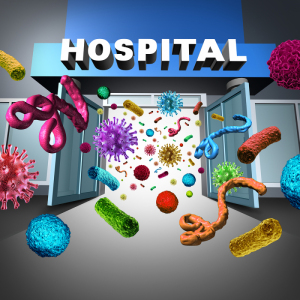From the September 2016 issue of HealthCare Business News magazine
By Thom Wellington
We have all uttered the words, “I did not see that coming,” a phrase that is often tossed around lightheartedly, but even more so when something earthshaking happens in our lives. We try to plan for all types of life-changing events, but inevitably something will show up with a powerful impact that we just were not expecting, or that we are not in control over. Whether it is a divorce, a financial crash or getting fired at work, the unexpected can turn our world upside down. From that point forward, it is up to the individual as to what they will do next, whether that is continuing on with the day-to-day routine, or backtracking to try and fix it. Often enough, there aren’t second chances when the damage is already done.
The same can be said about a health care-associated infection (HAI). A patient makes a trip to the hospital for a routine procedure and the next thing you know, a life-changing infection occurs. All of us enter the hospital thinking we will be in excellent hands with our doctor and anyone else we meet along the way. According to statistics, it is true that most patients leave the facility in good condition and experience a positive event. We applaud these outcomes and hope that everyone has a great experience. However, statistics also point to negative outcomes, with 75,000 deaths a year attributed to HAIs. This means 205 people die each day from something they did not see coming, something that could have been prevented.
During a recent luncheon meeting with Ken Cates, a principal with Northstar Management and a board member of Federal Guidelines Institute (FGI), we had an interesting conversation about HAIs and how health care institutions need to act more like industry. Cates stated, “You understand the news coverage an airplane crash gets, the story continues for days. Interesting enough, an average airplane crash is about the same number of people that die per day in hospitals from HAIs and it doesn’t get near the news coverage.” Ken has been a strong advocate for training to educate everyone who enters a medical facility.
A mandatory safety, or specialized custom training, meeting is held by 90 percent of my corporate clients. For example, one large aircraft manufacturer’s training focuses on foreign object debris and how it is not tolerated. Leaving a tool or anything that could find its way into an aircraft part can spell disaster. The same is true at other manufacturing facilities, and workers are quickly escorted out of the building for not following rules and protocols. Unfortunately, health care institutions seldom hold mandatory safety meetings because everyone is too busy. Most incoming maintenance and construction workers are more interested in completing their task and have no idea of the proper protocols to keep everyone in the hospital safe.
